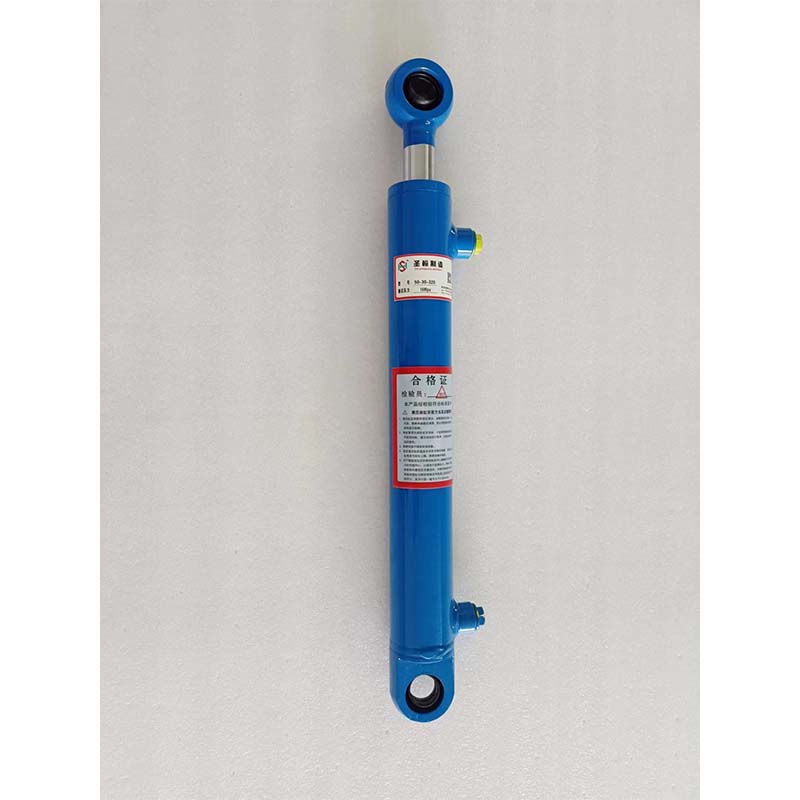Oct . 20, 2024 11:01 Back to list
welding hydraulic cylinder factory
The Role of Welding in Hydraulic Cylinder Manufacturing
Hydraulic cylinders are essential components in various industries, providing the necessary force and motion to operate machinery and equipment. They play a crucial role in sectors such as construction, manufacturing, and automotive. The production of hydraulic cylinders involves several critical steps, one of which is welding. This article explores the importance of welding in hydraulic cylinder factories, focusing on techniques, materials, and the overall significance of quality assurance in the manufacturing process.
Understanding Hydraulic Cylinders
A hydraulic cylinder converts hydraulic energy into mechanical energy, enabling linear motion. At its core, it consists of a cylinder barrel, piston, piston rod, and end caps. The basic functioning relies on pressurized hydraulic fluid, which pushes against the piston, thereby moving the piston rod in and out. To ensure durability and functionality, these components must be assembled with precision, and welding serves as a vital process in this assembly.
The Importance of Welding
Welding is the process of joining materials, typically metals or thermoplastics, by applying heat and pressure. In the context of hydraulic cylinder manufacturing, welding is used to attach various components, such as the end caps to the cylinder barrel. The quality of the weld is crucial, as it directly impacts the cylinder's ability to withstand high pressures and operational stresses.
1. Structural Integrity Hydraulic cylinders often operate under extreme pressure. Therefore, a strong and reliable weld is necessary to maintain structural integrity. A poorly executed weld can lead to failures, resulting in leaks or catastrophic failures during operation.
2. Material Compatibility Hydraulic cylinder manufacturers often utilize various materials, including steel, aluminum, and composite materials. Different welding techniques must be employed depending on the materials used. Understanding the properties and behaviors of different metals ensures that the right welding method is chosen, promoting a strong bond.
3. Process Efficiency Modern hydraulic cylinder factories strive for efficiency in their manufacturing processes. Automated welding techniques have emerged as a solution to reduce production time and increase precision. Robotic welding systems can perform consistent and repeatable welds, decreasing human error and improving productivity.
Common Welding Techniques Used
welding hydraulic cylinder factory

Several welding techniques are commonly employed in hydraulic cylinder manufacturing
- Gas Metal Arc Welding (GMAW) Also known as MIG welding, this method uses a continuous wire feed and gas to create a weld. It is advantageous for its speed and the ability to produce clean welds.
- Tungsten Inert Gas (TIG) Welding This technique is known for its precision and is often preferred for welding thin materials. TIG welding provides a high level of control, making it suitable for critical applications.
- Submerged Arc Welding (SAW) This method is ideal for large components and offers deep penetration, making it perfect for thick-walled hydraulic cylinders.
Each of these techniques has its advantages and is selected based on the specific requirements of the hydraulic cylinders being manufactured.
Quality Assurance in Welding
Quality assurance is paramount in the welding process of hydraulic cylinders. Manufacturers implement rigorous inspection and testing procedures to ensure that welds meet the required standards. Non-destructive testing (NDT) methods, such as ultrasonic testing, magnetic particle testing, and radiographic inspection, are employed to detect any defects in the welds without damaging the product.
Additionally, manufacturers adhere to industry standards and certifications, such as ISO 9001, to ensure that their welding processes are reliable and yield high-quality results. Training and certification for welders are also critical components of maintaining quality, as skilled welders are essential for producing strong, reliable welds.
Conclusion
In summary, welding plays a fundamental role in the manufacturing of hydraulic cylinders. It is vital for assembling components that must withstand high operational pressures and stresses. By utilizing various welding techniques and ensuring quality assurance through rigorous testing and training, hydraulic cylinder factories can produce dependable products that meet the needs of diverse industries. As technology continues to evolve, the integration of automated welding systems promises to enhance efficiency and precision, further solidifying the importance of welding in hydraulic cylinder manufacturing.
-
Fork Lift Power Units - Hebei Shenghan | Efficiency, Reliability
NewsJul.13,2025
-
1.5-Ton Turbocharged Cylinder-Hebei Shenghan|Hydraulic Solution,Energy Efficiency
NewsJul.13,2025
-
Auto Hoist Power Units-Hebei Shenghan|Efficiency&Industrial Lifting
NewsJul.13,2025
-
Double Acting Power Units-Hebei Shenghan|Hydraulic Solutions,Industrial Efficiency
NewsJul.13,2025
-
1.5 Ton Lifting Cylinder 70/82-40-290-535 - High-Performance Hydraulic Solution | Hebei Shenghan
NewsJul.13,2025
-
Fork Lift Power Units - Hebei Shenghan | Efficiency&Reliability
NewsJul.13,2025
